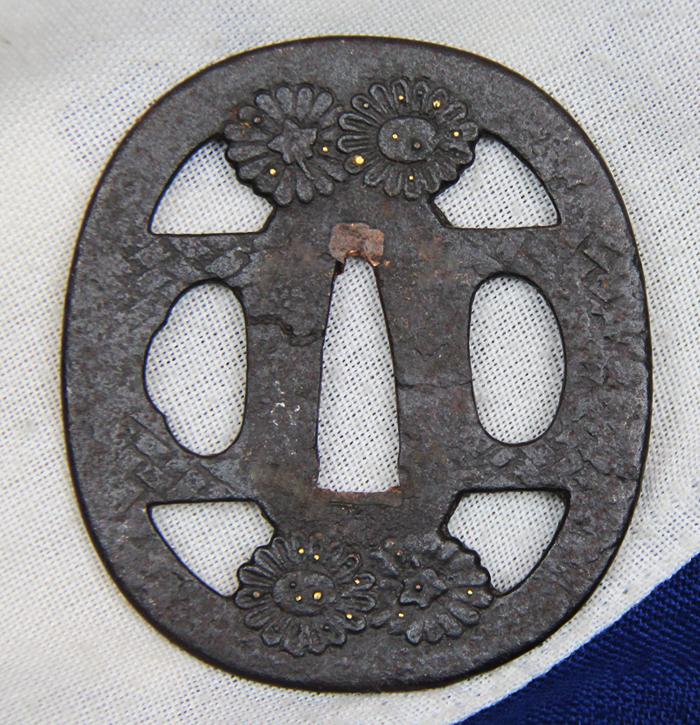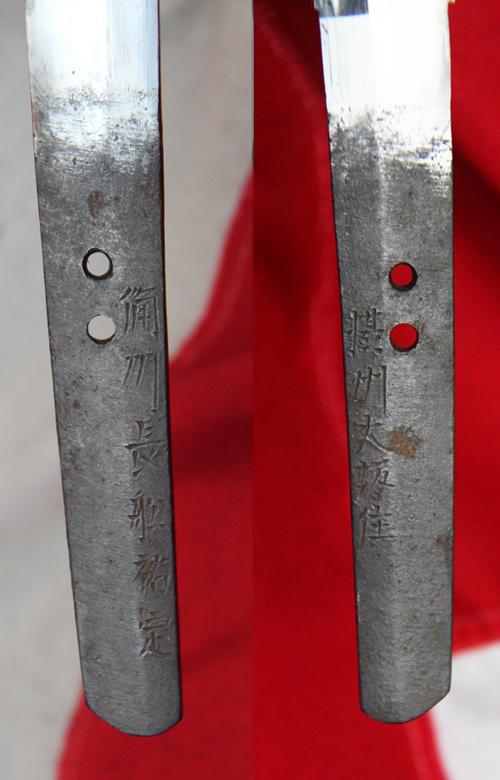A Superb Shinto Period Samurai Katana By Bizen Osafune Sukesada, Named By The Swordsmith, Likely For its Original Samurai Owner
Circa 1650. This beautiful Katana is most intriguing in that it is not only signed by one of the great schools of samurai swordsmiths but also inscribed as to whom is was made for, we we have yet to translate, as the kanji are difficult to interpret
.
Fully matching suite of stunning koshirae all decorated with the gold imperial chrysanthemum, including the superb tsuba. Superb habaki blade collar with fabulous mirror bright shakudo patina, with gold lines. isime urushi lacquer saya.
Being descendant of the Ichimonji Line they were also known to have made some of the finest swords. This is where they really shine, swordsmiths such as Yozosaemon Sukesada were known to make masterpiece blades that outshone the vast majority of the time period. In fact Yozosaemon is considered one of the representative swordsmiths of the Era, going hand in hand with names like Muramasa of the Soshu/Sengo Tradition and Kanemoto of the Mino Tradition. Sukesada swords were also popular with those in high ranks and we see many tachi and longer katana being made, these were often of exceptional quality and were quite deserving of their Jchimonji lineage. Sukesada swords would spread throughout Japan, with their home forges being in Bizen province. This however ; would not last. The great flood of the Yoshii River around 1590 signalled a death toll to the Sukesada line. This flood hit Bizen province hard and wiped out nearly all of the Sukesada forges, leaving only several offshoots of the Sukesada family swordsmiths to carry out the tradition, such the Shinto period Yokoyama Sukesada family swords. The Sukesada tradition struggled to survive and eventually died out partway through the Shinto Era as it never really came close to reaching the Majesty and quality of its predecessor and mainline schools. The great flood essentially marked the end for one of the Koto Era's greatest sword making traditions.
The blade has a fabulous hamon, with some thin, naturally aged light edge delamination thinning around the top of the hi on either side. . 27.5 inch blade from tsuba to tip.
Code: 24820
7995.00 GBP










